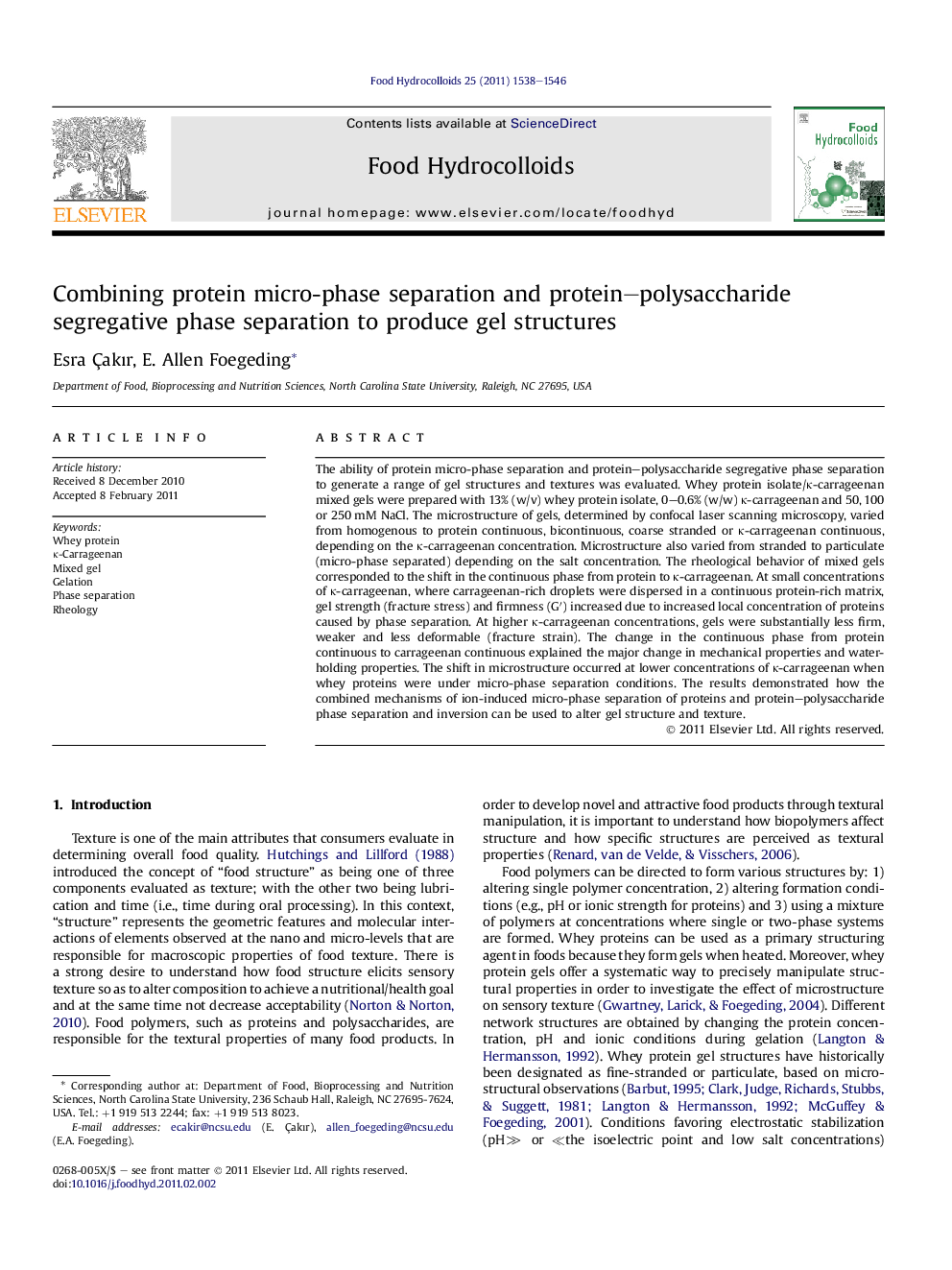| Article ID | Journal | Published Year | Pages | File Type |
|---|---|---|---|---|
| 604554 | Food Hydrocolloids | 2011 | 9 Pages |
The ability of protein micro-phase separation and protein–polysaccharide segregative phase separation to generate a range of gel structures and textures was evaluated. Whey protein isolate/κ-carrageenan mixed gels were prepared with 13% (w/v) whey protein isolate, 0–0.6% (w/w) κ-carrageenan and 50, 100 or 250 mM NaCl. The microstructure of gels, determined by confocal laser scanning microscopy, varied from homogenous to protein continuous, bicontinuous, coarse stranded or κ-carrageenan continuous, depending on the κ-carrageenan concentration. Microstructure also varied from stranded to particulate (micro-phase separated) depending on the salt concentration. The rheological behavior of mixed gels corresponded to the shift in the continuous phase from protein to κ-carrageenan. At small concentrations of κ-carrageenan, where carrageenan-rich droplets were dispersed in a continuous protein-rich matrix, gel strength (fracture stress) and firmness (G′) increased due to increased local concentration of proteins caused by phase separation. At higher κ-carrageenan concentrations, gels were substantially less firm, weaker and less deformable (fracture strain). The change in the continuous phase from protein continuous to carrageenan continuous explained the major change in mechanical properties and water-holding properties. The shift in microstructure occurred at lower concentrations of κ-carrageenan when whey proteins were under micro-phase separation conditions. The results demonstrated how the combined mechanisms of ion-induced micro-phase separation of proteins and protein–polysaccharide phase separation and inversion can be used to alter gel structure and texture.
Graphical abstractFigure optionsDownload full-size imageDownload as PowerPoint slide
